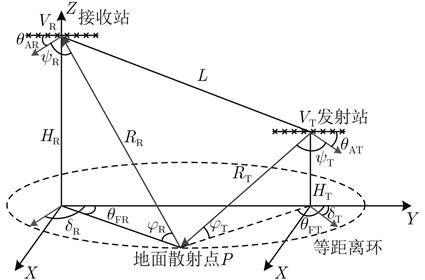| 基于稀疏贝叶斯学习的机载双基雷达杂波抑制 |
| |
| 引用本文: | 吕晓德, 杨璟茂, 岳琦, 张汉良. 基于稀疏贝叶斯学习的机载双基雷达杂波抑制[J]. 电子与信息学报, 2018, 40(11): 2651-2658. doi: 10.11999/JEIT180062 |
| |
| 作者姓名: | 吕晓德 杨璟茂 岳琦 张汉良 |
| |
| 作者单位: | 1.中国科学院电子学研究所 北京 100190;;2.微波成像技术国家级重点实验室 北京 100190;;3.中国科学院大学 北京 100049 |
| |
| 摘 要: | 
机载双基雷达杂波与构型有关且具有严重的距离依赖性,因此杂波脊复杂多变,独立同分布(IID)的样本很少。传统的空时自适应处理(STAP)方法受独立同分布样本数的限制,对机载双基雷达杂波的抑制性能有限。
基于机载雷达杂波在角度-多普勒域分布的稀疏特性和稀疏贝叶斯学习(SBL)在稀疏信号重建方面的优势,该文将SBL算法应用于较为复杂的机载双基雷达双动模式下杂波抑制,该方法可以用少量训练单元杂波估计待测距离单元的杂波协方差矩阵(CCM),然后进行空时自适应处理;同时,该算法不需要样本独立同分布,在双基双动模式下对杂波的抑制性能较好,仿真结果验证了算法的有效性。

|
| 关 键 词: | 杂波抑制 稀疏重建 空时自适应处理 稀疏贝叶斯学习 |
| 收稿时间: | 2018-01-16 |
| 修稿时间: | 2018-08-13 |
|
| 点击此处可从《电子与信息学报》浏览原始摘要信息 |
|
点击此处可从《电子与信息学报》下载免费的PDF全文 |
|



